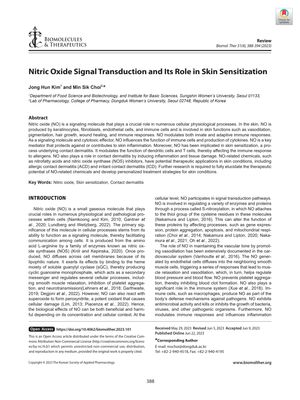Nitric Oxide Signal Transduction and Its Role in Skin Sensitization
June 2023
in “
Biomolecules & therapeutics
”

TLDR Nitric oxide is important for skin functions and both helps protect against and contributes to skin inflammation and sensitization.
Nitric oxide (NO) is an important signaling molecule in the skin, involved in various functions including vasodilation, pigmentation, hair growth, wound healing, and immune responses. It is produced by different skin cells and modulates both innate and adaptive immunity by affecting immune cells and cytokine production. NO plays a dual role in skin inflammation, acting as a protector and contributor, and is particularly implicated in skin sensitization and contact dermatitis by influencing dendritic and T cell functions, leading to inflammation and tissue damage. Chemicals related to NO, such as nitrofatty acids and nitric oxide synthase inhibitors, show promise for treating skin conditions like allergic and irritant contact dermatitis, but further research is needed to fully understand their therapeutic potential and to develop personalized treatments.


